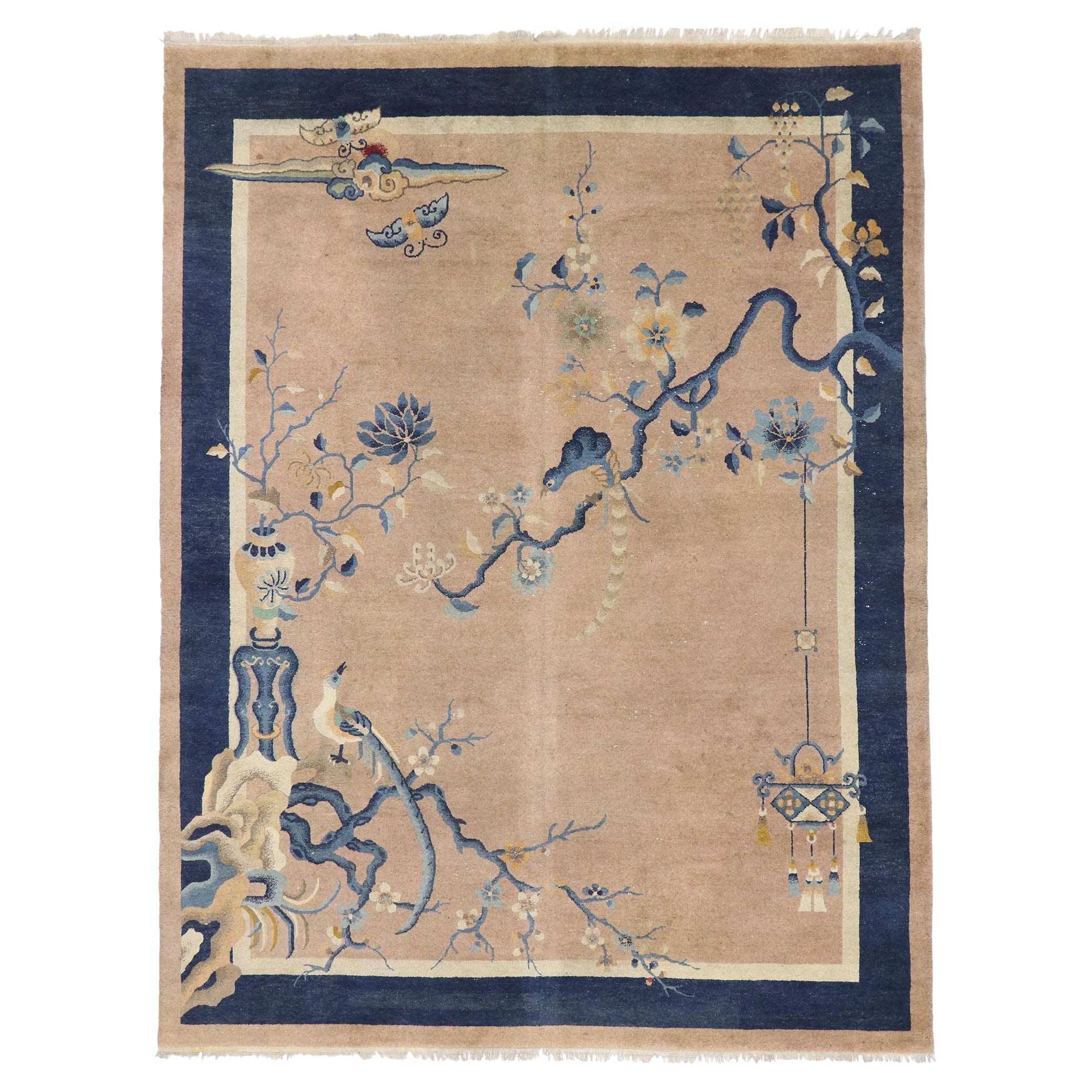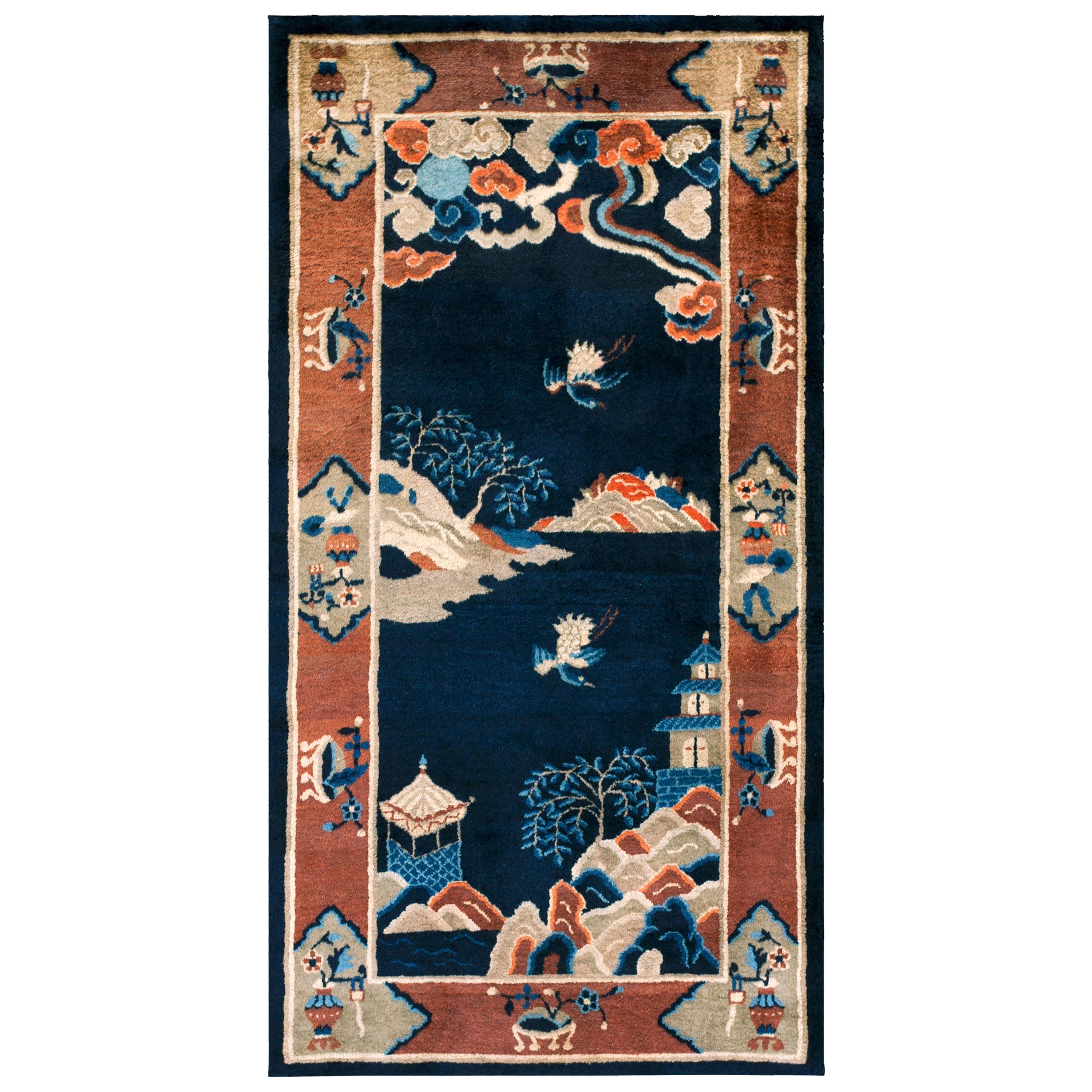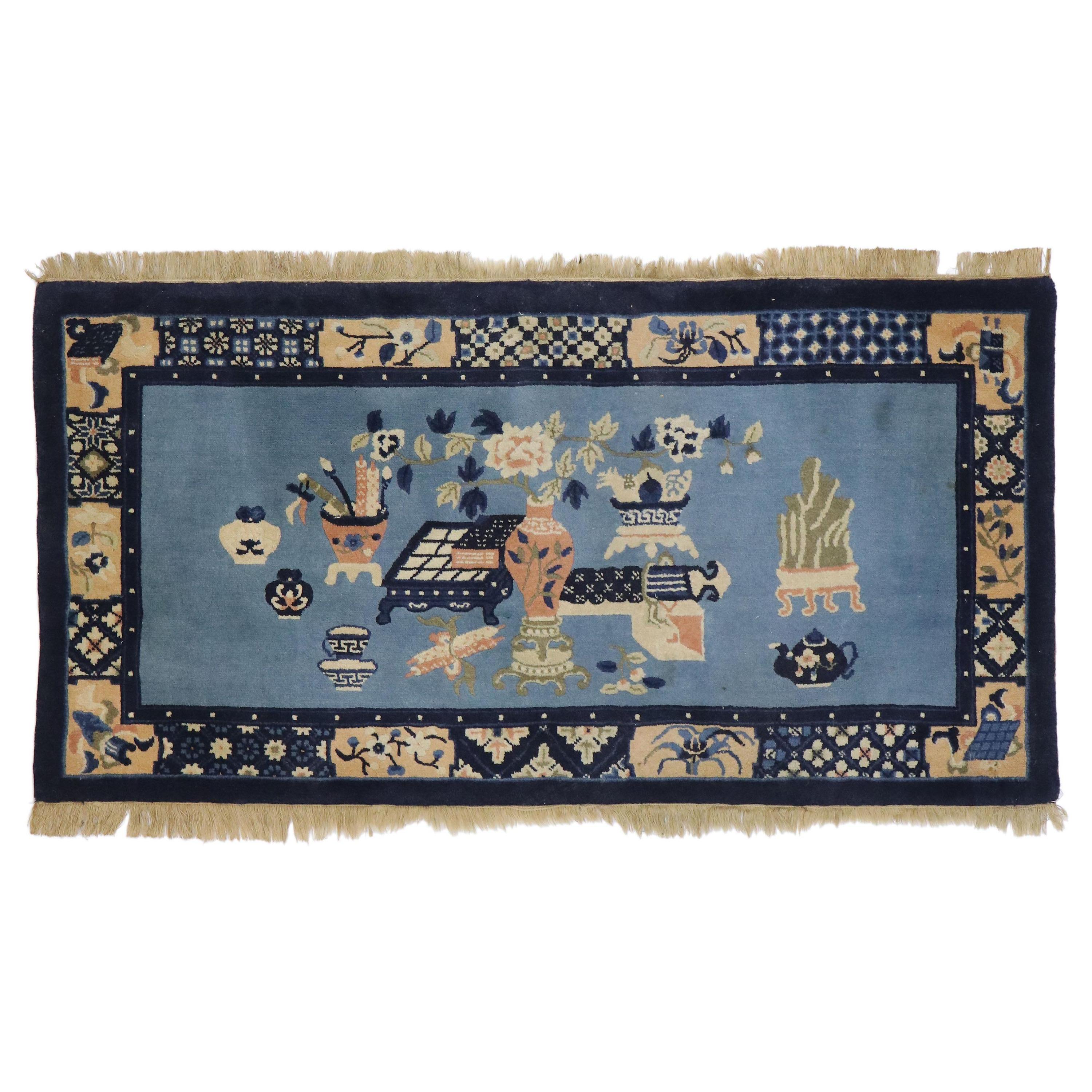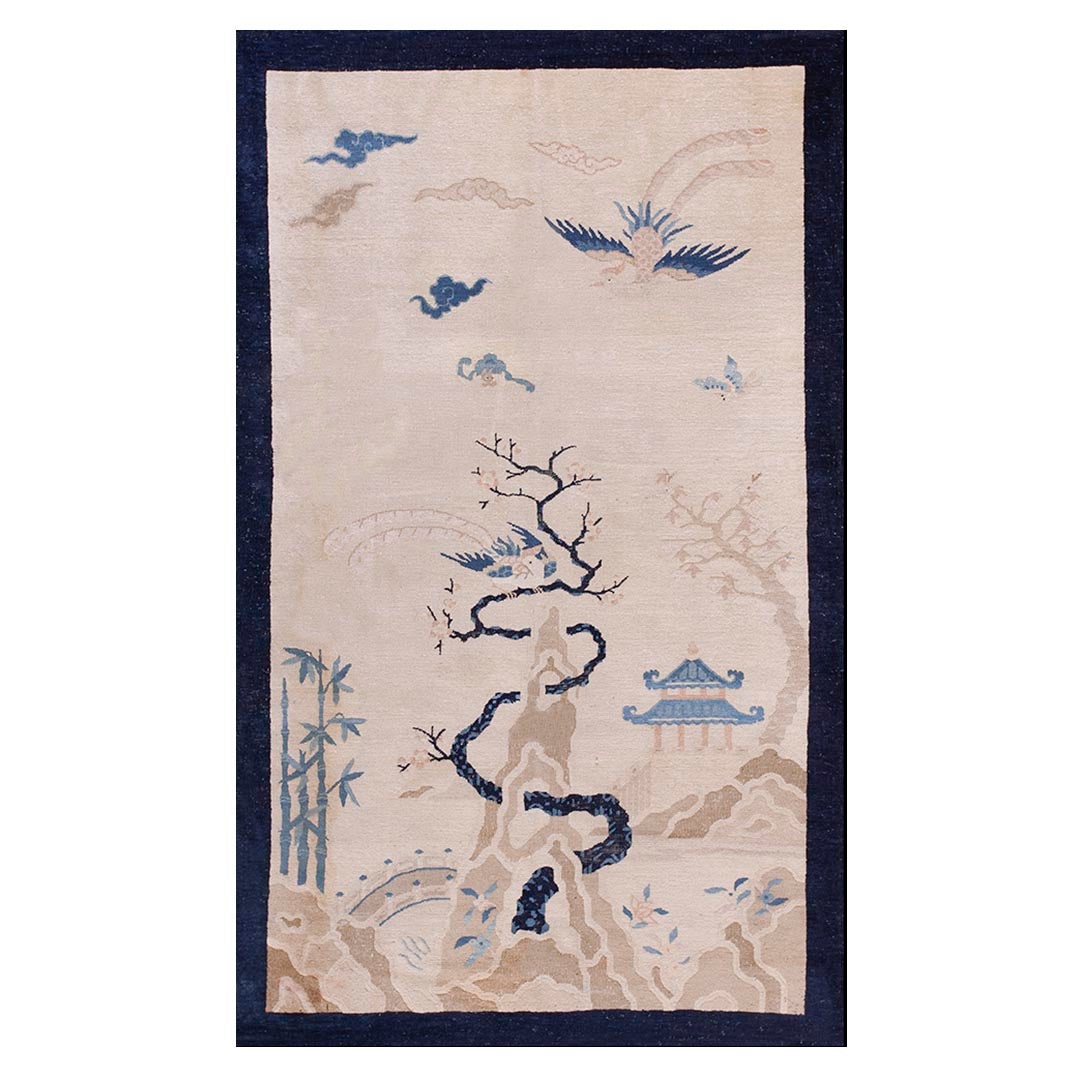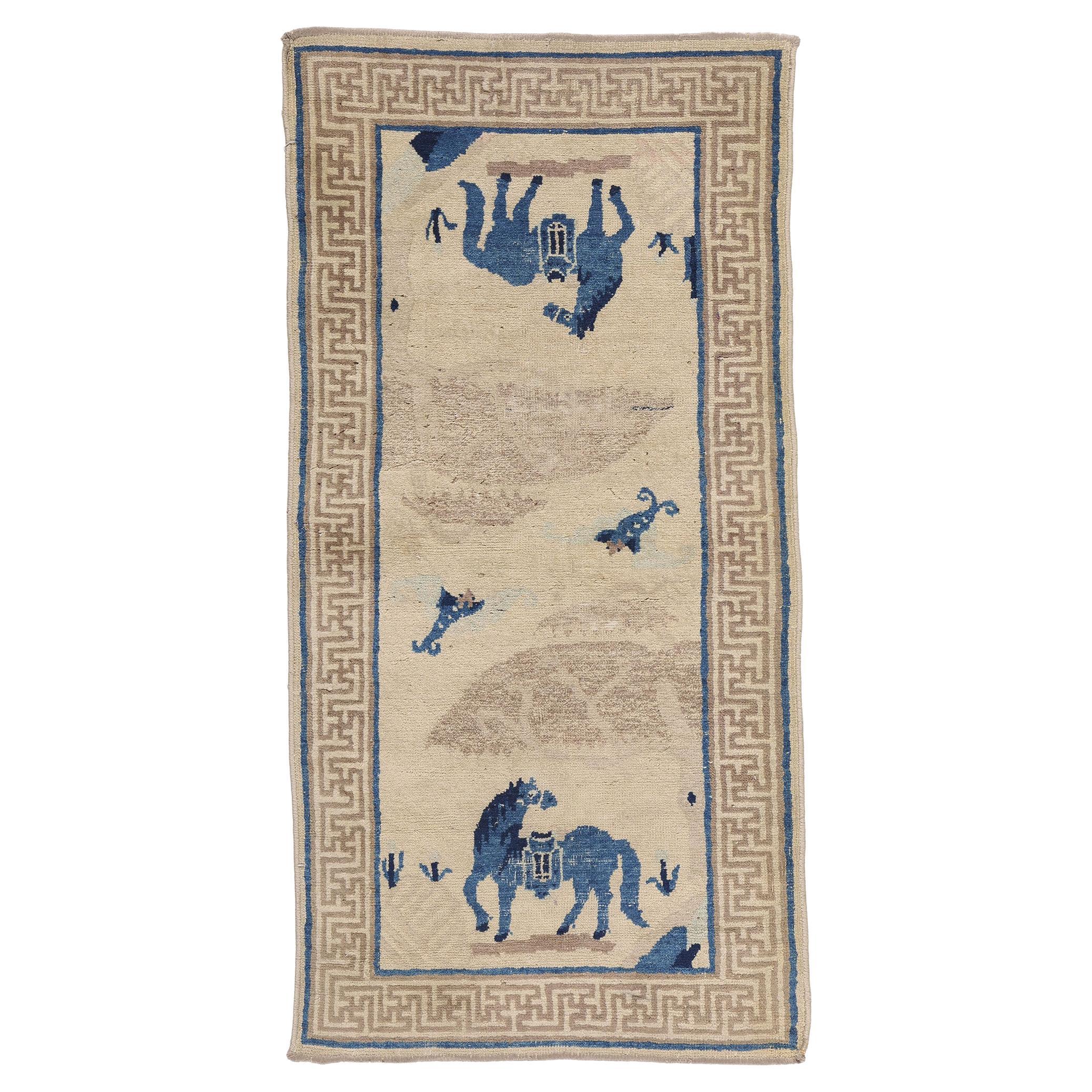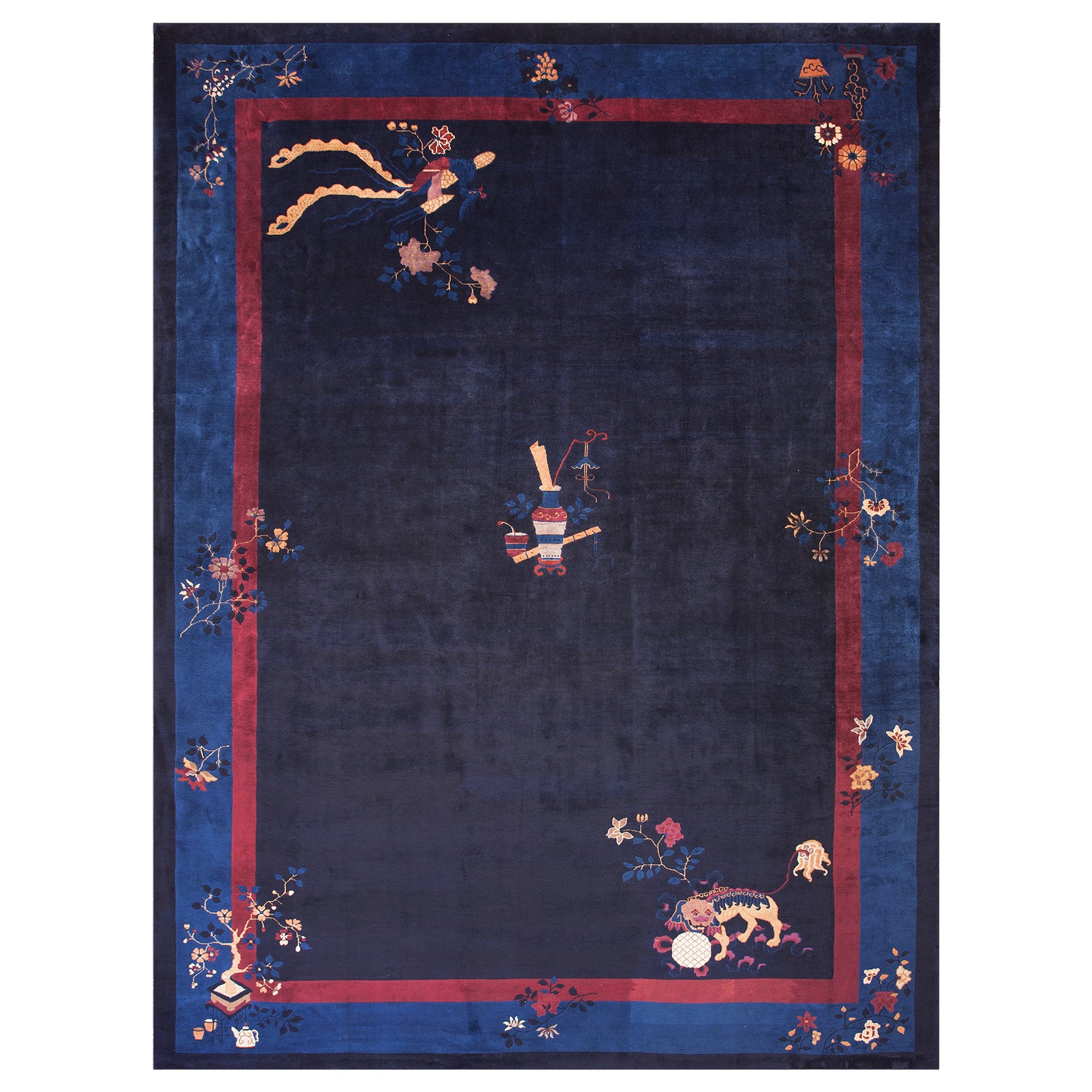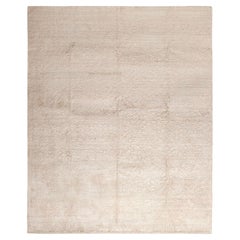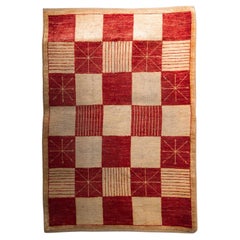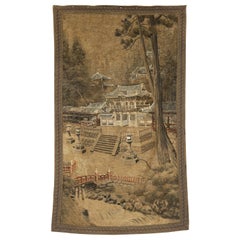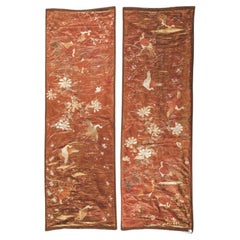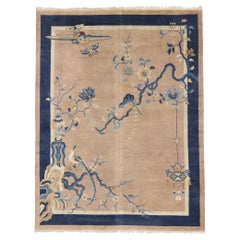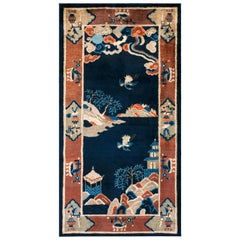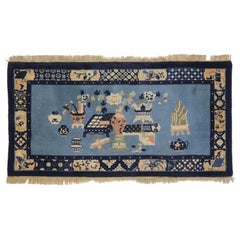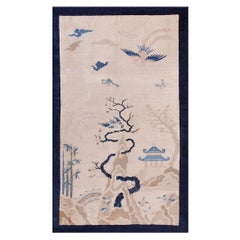Items Similar to Late Ming c.a Antique Carpet with emperor on clouds
Want more images or videos?
Request additional images or videos from the seller
1 of 11
Late Ming c.a Antique Carpet with emperor on clouds
$17,072.58
$21,340.7220% Off
£12,776.98
£15,971.2320% Off
€14,400
€18,00020% Off
CA$23,553.11
CA$29,441.3820% Off
A$26,192.03
A$32,740.0420% Off
CHF 13,756.62
CHF 17,195.7820% Off
MX$320,223.88
MX$400,279.8520% Off
NOK 171,420.70
NOK 214,275.8820% Off
SEK 161,603.43
SEK 202,004.2820% Off
DKK 109,619.95
DKK 137,024.9420% Off
About the Item
Behold, a magnificent antique carpet from the late Ming Dynasty period, a true testament to the artistry and craftsmanship of ancient China. Crafted from the finest wool and meticulously hand-knotted, this masterpiece is a window into a bygone era, where legends and traditions interweave to create something truly extraordinary.
At its heart, an emperor stands upon a billowing cloud, shaping the very heavens above. It's a scene born from legend and folklore, where these splendid clouds were believed to protect the Emperor of China, revered as the Son of Heaven. Over time, the "auspicious cloud" (祥雲, xiáng yún) became synonymous with good fortune, a symbol of blessings and prosperity.
Beneath this celestial tableau, a three-tiered pagoda graces the scene. Its elegant presence adds depth to the tapestry, a symbol of ancient spirituality and wisdom. It beckons us to explore the layers of history woven into this carpet.
As for the origins of carpets in China, they remain shrouded in the mists of time. Perhaps they arrived with merchants and travelers from distant lands, their intricate patterns and textures capturing the imagination of the Chinese people. What we do know is that by the time of the Ming Dynasty, in the 14th century, carpet weaving and knotting had become a well-established craft.
Under the reign of the Ming emperors, which lasted until the mid-17th to 18th century, Chinese artisans honed their skills to perfection. They became masters of their craft, weaving and knotting with unmatched precision. It was during this golden era that carpets of enchanting beauty were born.
As you gaze upon this carpet, you can't help but feel a connection to those ancient artisans, their dedication to their craft, and their reverence for tradition. The intricate knots and vibrant colors are a testament to their ingenuity and skill, preserving the stories and myths of their culture for generations to come.
This carpet isn't just a piece of woven fabric; it's a portal to a world where legends come to life, where clouds carry the hopes of emperors, and where craftsmanship transcends time. It's a reminder of the rich tapestry of Chinese history and the enduring beauty of their artistry.
- Dimensions:Width: 57.09 in (145 cm)Length: 31.5 in (80 cm)
- Style:Ming (In the Style Of)
- Materials and Techniques:Wool,Hand-Knotted
- Place of Origin:
- Period:1700-1709
- Date of Manufacture:1700
- Condition:Wear consistent with age and use. Slight wear but still in good condition.
- Seller Location:Milano, IT
- Reference Number:1stDibs: LU4911236707562
About the Seller
4.8
Gold Seller
Premium sellers maintaining a 4.3+ rating and 24-hour response times
Established in 2010
1stDibs seller since 2019
412 sales on 1stDibs
Typical response time: 6 hours
- ShippingRetrieving quote...Shipping from: milano, Italy
- Return Policy
Authenticity Guarantee
In the unlikely event there’s an issue with an item’s authenticity, contact us within 1 year for a full refund. DetailsMoney-Back Guarantee
If your item is not as described, is damaged in transit, or does not arrive, contact us within 7 days for a full refund. Details24-Hour Cancellation
You have a 24-hour grace period in which to reconsider your purchase, with no questions asked.Vetted Professional Sellers
Our world-class sellers must adhere to strict standards for service and quality, maintaining the integrity of our listings.Price-Match Guarantee
If you find that a seller listed the same item for a lower price elsewhere, we’ll match it.Trusted Global Delivery
Our best-in-class carrier network provides specialized shipping options worldwide, including custom delivery.More From This Seller
View AllTibetan Silk Flowers Rug
Located in Milano, IT
A wonderful rug with a nostalgic and romantic design, this beautiful piece of furniture combines a Tibetan wool background with delicate silk flowers in a ...
Category
Antique Early 19th Century Tibetan Romantic Persian Rugs
Materials
Silk
$10,433 Sale Price
20% Off
Darya antique wool rug from Pamir
Located in Milano, IT
The Darya rug from the Pamir is a refined example of textile craftsmanship from the enchanting and remote mountainous regions of the Pamir, often called the "Roof of the World." Made...
Category
Antique Early 1900s Chinese Chinoiserie Central Asian Rugs
Materials
Wool, Cotton
Japanese Antique Silk and Cotton Tapestry
Located in Milano, IT
Wonderful and very rare Japanese tapestry made in the 1900s, made of woven silk and cotton, of absolute fineness.
The tapestry is developed in length ...
Category
Antique Early 1800s Japanese Japonisme Decorative Art
Materials
Fabric, Silk
$2,667 Sale Price
25% Off
Pair of Silk Blankets or Embroideries, Qing Dynasty
Located in Milano, IT
This spectacular pair of silk fabrics, dating back to the 19th-century Qing dynasty, is a precious example of the ancient Chinese art of embroidery. The fabrics are adorned with embr...
Category
Antique Early 1800s Chinese Chinoiserie Textiles
Materials
Silk
Distinctive Chinese Decorative Wall Plate
Located in Milano, IT
Round plate made of bronze and cloisonné enamel designed in China in the 20th century.
This plate is made of bronze and cloisonné enamel, a goldsmith technique originally applied to...
Category
Antique Early 1900s Chinese Chinese Export Antiquities
Materials
Bronze
$758 Sale Price
20% Off
Buddha in Imperial Jade
Located in Milano, IT
This skillfully carved Buddha in imperial jade represents one of the most iconic figures in Buddhist tradition. Imperial jade, known for its particular pale green and translucent hue...
Category
Antique Early 1900s Chinese Chinoiserie Sculptures and Carvings
Materials
Jade
You May Also Like
Antique Chinese Art Deo Pictorial Rug with Chinoiserie Style
Located in Dallas, TX
77583 antique Chinese Art Deo Pictorial rug with Chinoiserie style 08'11 x 11'08. This hand knotted wool antique Chinese Art Deco pictorial rug features a colo...
Category
Early 20th Century Chinese Chinoiserie Chinese and East Asian Rugs
Materials
Wool
Antique Chinese Peking Rug 3' 0" x 5' 10"
Located in New York, NY
Antique Chinese - Peking rug. Measures: 3'0" x 5'10".
Category
Vintage 1910s Chinese Chinese and East Asian Rugs
Materials
Wool
Antique Chinese Baotou Scholar’s Rug with Confucian Pictorial Design
Located in Dallas, TX
77586, antique Chinese Baotou Scholar’s rug with Confucian Pictorial Design. This hand-knotted wool antique Chinese Baotou rug features a pi...
Category
Early 20th Century Chinese Chinoiserie Chinese and East Asian Rugs
Materials
Wool
Early 20th Century Chinese Peking Carpet ( 4' x 6'9" - 122 x 206 )
Located in New York, NY
Early 20th Century Chinese Peking Carpet ( 4' x 6'9" - 122 x 206 )
Category
Vintage 1910s Chinese Chinese and East Asian Rugs
Materials
Wool
$2,850 Sale Price
25% Off
Antique Chinese Peking Pictorial Carpet, 02'00 x 03'11
Located in Dallas, TX
79071 Antique Chinese Peking Pictorial Rug, 02'00 x 03'11. This hand-knotted wool antique Chinese Peking pictorial rug masterfully captures the essence of traditional Chinese artistr...
Category
Early 20th Century Chinese Qing Chinese and East Asian Rugs
Materials
Wool
Early 20th Century Chinese Peking Carpet ( 11' x 15' - 335 x 457 )
Located in New York, NY
Early 20th Century Chinese Peking Carpet ( 11' x 15' - 335 x 457 )
Category
Vintage 1910s Chinese Chinese and East Asian Rugs
Materials
Wool
More Ways To Browse
Chinese Antique Emperors
Antique Chinese Tapestry
Woven Legends Rug
Pagoda Stand
Ming Dynasty 18th Century
14th Century Tapestry
Black White Armchair
Table Ten
Unique Vintage Sofa
Vintage Marcel Breuer
Plush Chair
Scandinavian Teak Chairs
Sofa With Wood Sides
Marble Table Portugal
Space Age Yellow
Vintage Mid Century Dining Chairs 6
Antique One Drawer Table
1960s Wood Lounge Chairs
